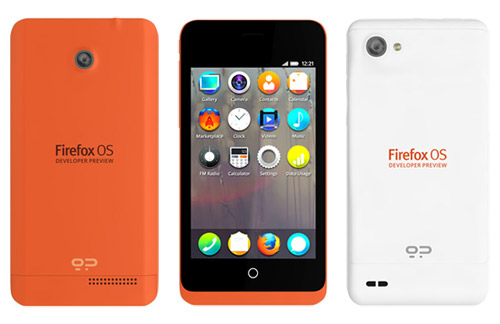Firefox OS Shows Off First Phones
The Firefox OS, an open-source, heavily Web-dependent mobile operating system that Mozilla is developing, plans to roll out some cute-looking smartphones in February that developers will be able to use to build apps for the platform.

In a blog post Tuesday, Mozilla’s director of websites and developer engagement, Stormy Peters, introduced the first two smartphone models, which are being made by a company called Geeksphone (it’s working with wireless carrier Telefonica on the project). The phones look similar to the iPhone (and, by extension, so many other smartphones on the market), with a touch-screen face framed in black. One will be bright orange–matching the Firefox logo’s hue–and the other will be white.
Peters says the “Peak” model will have a dual-core Qualcomm Snapdragon processor, 4.3-inch touch-screen, 8 megapixel camera on its back, and a 2 megapixel camera on its front. The “Keon” model will have a single-core Qualcomm Snapdragon processor, 3.5-inch touch-screen and a 3 megapixel camera on the rear. Both will include 4 gigabytes of built-in storage space and 512 megabytes of RAM. No details were given about the devices’ pricing or exact availability.
The phones look good, and if they’re priced low enough they could snag developers who are still on the fence about making apps for the platform and want to see it running on a purpose-built device (rather than a computer-based simulator or, say, a recent Android smartphone).
Keep Reading
Most Popular
Large language models can do jaw-dropping things. But nobody knows exactly why.
And that's a problem. Figuring it out is one of the biggest scientific puzzles of our time and a crucial step towards controlling more powerful future models.
How scientists traced a mysterious covid case back to six toilets
When wastewater surveillance turns into a hunt for a single infected individual, the ethics get tricky.
The problem with plug-in hybrids? Their drivers.
Plug-in hybrids are often sold as a transition to EVs, but new data from Europe shows we’re still underestimating the emissions they produce.
Stay connected
Get the latest updates from
MIT Technology Review
Discover special offers, top stories, upcoming events, and more.